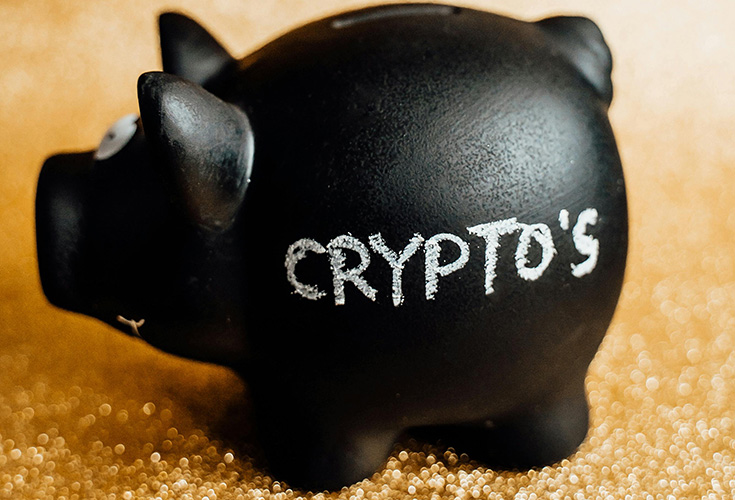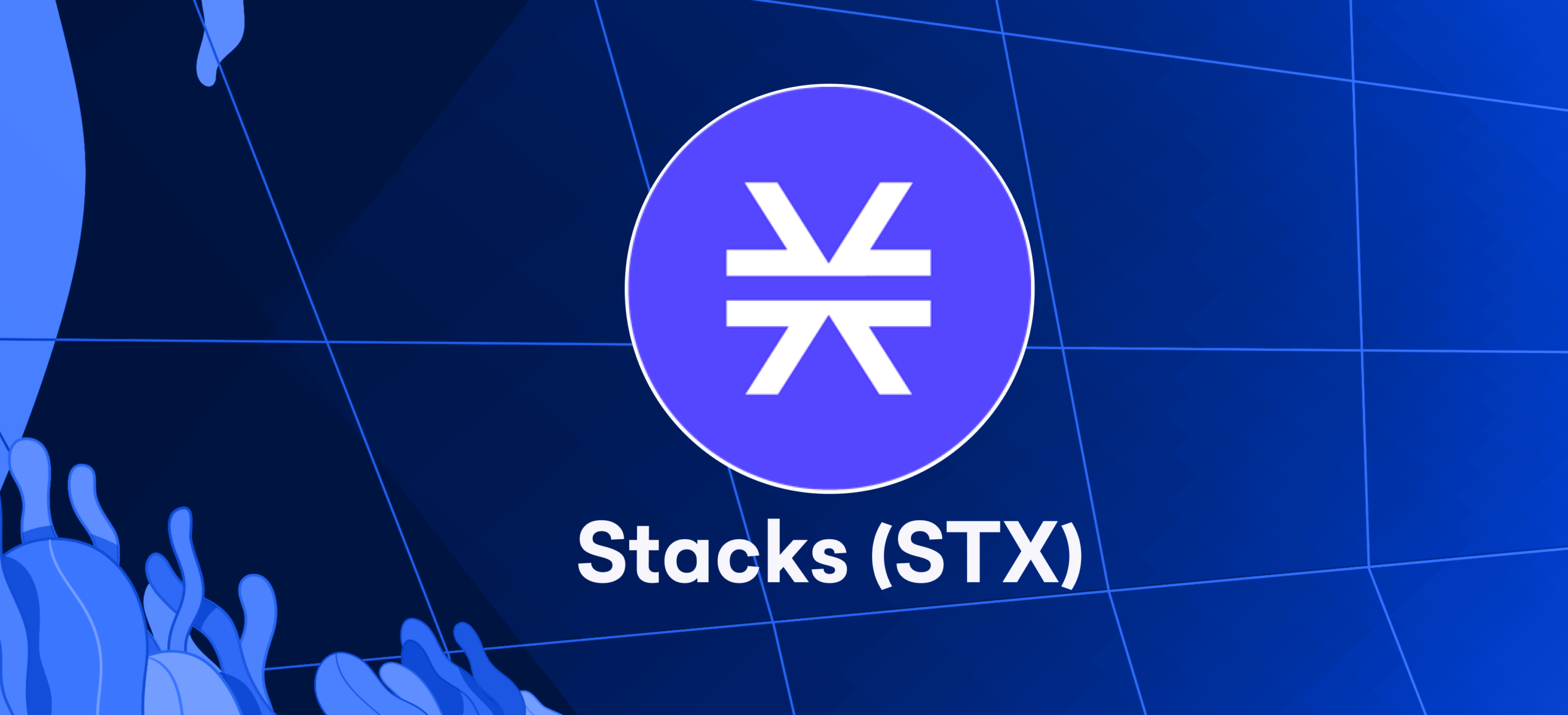
As a potential investor, you may know that cryptocurrencies are digital assets that function on decentralized computer networks without banks or governments. While you hold many benefits like control, transparency, and innovation.
There are also significant drawbacks, such as security breaches and uncertain regulations- making it essential to stay informed about price fluctuations.
One of the most widely used cryptocurrencies is Tether (USDT), a stablecoin that claims to maintain a 1:1 peg with the U.S. dollar. Tether acts as a bridge between conventional and digital financial systems by enabling fast and low-cost transactions across various platforms.
What Is A Stablecoin?
A stablecoin is a type of cryptocurrency designed to minimize price volatility. It achieves stability by being pegged to a specific value, often linked to a reserve like the U.S. dollar.
Unlike Bitcoin and other cryptocurrencies, stablecoins aim for price stability. They’re used to store value, make transactions, and as a base for decentralized finance (DeFi) applications.
What Is Tether (USDT)?
Tether (USDT) is a stablecoin in the world of cryptocurrency, ensuring stability and reliability. Its value remains constant without abrupt fluctuations as it is linked to the US dollar. One Tether token equals one dollar.
In 2014, iFinex created Tether alongside their crypto exchange BitFinex. Tether promises to hold enough dollars and assets in reserve to support all existing Tether tokens, guaranteeing a value of one dollar for each token.
Despite this claim, some have raised concerns about the transparency of Tether’s finances and whether they truly have the reserves necessary to back up their promise.
Tether, the most popular stablecoin globally and third-largest cryptocurrency by market value, can be utilized on various blockchain platforms such as Bitcoin, Ethereum, TRON, and more, making it a preferred choice for traders.
Additionally, Tether offers several tokens tied to other assets like the euro, Chinese Yuan, or gold. The broad range of use cases makes Tether an exciting option for businesses in search of stability amidst volatile markets.
A Brief History
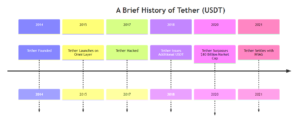
2012 – Idea for new cryptocurrencies on Bitcoin blockchain published.
July 2014 – Realcoin, a startup backed by the US dollar, announced.
October 2014 – First Realcoin tokens issued on the Bitcoin blockchain.
November 2014 – Realcoin rebranded to Tether, entering private beta.
January 2015 – Cryptocurrency exchange Bitfinex enabled trading of Tether.
April 2017 – Tether’s international transfers through Wells Fargo were blocked.
2017 – Tether issues tokens on multiple blockchains, including Ethereum.
2017 to 2018 – Tether’s outstanding amount grows from $10 million to $2.8 billion.
Early 2018 – Tether accounts for up to 80% of Bitcoin volume.
February 2018 – Tether ends its relationship with auditor Friedman LLP.
2018 – Tether’s primary reserve bank might be Puerto Rico’s Noble Bank.
October 2018 – Tether confirms it has more than $1.8 billion in Deltec Bank.
2019 – Tether changes its terms of service and website claims.
2019 – New York Attorney General files documents related to Tether’s banking issues.
2020 – Tether launches a gold-based stablecoin, Tether Gold (XAUT).
2021 – Bitfinex pays $18.5 million in fines and ceases USDT trading in New York.
2021 – U.S. Treasury Secretary Janet Yellen calls meeting to discuss Tether.
2021 – CFTC fines Tether and Bitfinex $42.5 million for various violations.
2021 – Tether discloses reserve composition after seven years.
May 2021 – Tether’s market value reaches $60 billion.
May 2023 – Tether’s market cap reaches $63.6 billion.
Understanding Tether
Stablecoin Tether falls under the category of rapidly expanding cryptocurrencies. Its objective is to maintain a steady value for its tokens by anchoring it to the price of a conventional currency like the US dollar.

Tether has extended its services by issuing tokens associated with the offshore Chinese yuan, Mexican peso, gold, and even euro. However, none of these currencies have generated a market cap sizeable enough to compete with their U.S. dollar-pegged USDT tokens.
Pegged Defined
Stablecoins, unlike cryptocurrencies such as Bitcoin that are more speculative and volatile in price, are backed by collateral reserves primarily consisting of the pegged currency. This traditional form of currency acts as a safety net, ensuring stable and predictable values for stablecoins.
Stabilization
Stablecoins have gained popularity as a means of payment due to their reliable value. They function similarly to traditional money, making them an attractive option for transactions.
Additionally, stablecoins’ use in decentralized finance protocols, such as lending and staking, has contributed significantly to their growth. Notably, stablecoins also allow for easier speculation in cryptocurrency markets.
Stand Out Features
- Tether is pegged 1:1 to the US dollar, enhancing stability.
- It’s the first widely-adopted stablecoin in cryptocurrency markets.
- Tether facilitates low-fee, speedy cross-border transactions.
- Has a significant presence, often top three in global trading volume.
- USDT can be stored on any wallet supporting ERC20 tokens.
- Tether’s transparency is ensured through regular professional audits.
- USDT serves as a bridge between fiat and crypto assets.
- It offers frictionless exchange between different cryptocurrency exchanges.
- Tether is blockchain-agnostic, operating on several blockchains.
- Its market cap often surpasses $60 billion, indicating wide usage.
How Does Tether (USDT) Work?
Tether’s Concept
Tether is designed to keep cryptocurrency values stable. Unlike Bitcoin and Ethereum, Tether aims to reduce significant fluctuations in price.
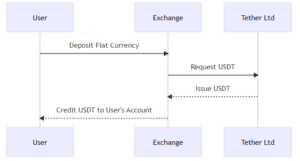
Tether’s Value Proposition
USDT is always equivalent to the US Dollar, keeping a 1:1 ratio. This means that every Tether in circulation must be matched with an equal value of USD in the Tether reserve fund, which ensures price stability.
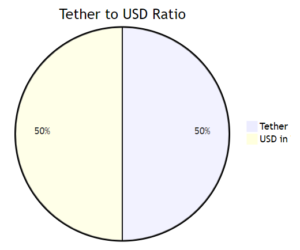
Blockchain Usage
Tether uses blockchain technology, similar to other cryptocurrencies. Initially functioning within the Bitcoin network using the Omni Layer Protocol, Tether has expanded and can now be used on other networks such as Ethereum and Tron.
Transaction Process
Tether transactions work similarly to other cryptocurrencies, taking place through its blockchain. With Tether, individuals have the ability to securely and directly transfer USDT to another digital wallet without the need for a central authority or bank interfering in their exchange.
Minting And Redemption
Tether Limited creates new USDT by ‘minting’ it when someone buys the coin with fiat currency. Conversely, during redemption, USDT is destroyed or ‘burned’ when switched back to fiat.
Risks And Controversies
Despite being convenient, Tether has attracted regulatory scrutiny and legal issues. The main concerns revolve around the reserve holdings and how their widespread use in the crypto market could impact it.
Tether (USDT) Use Cases

1. Remittance Transfers
An overseas worker uses Tether (USDT) to send money to his family back home. Due to its stability, he doesn’t worry about the value fluctuations common with traditional cryptocurrencies.
2. eCommerce Transactions
A customer pays for her online purchases using USDT. The merchant, valuing the stability and liquidity of the coin, gladly accepts it, thereby avoiding fluctuating currency exchange rates.
3. Financial Hedging
An investor converts some of his volatile crypto assets into USDT during a market downturn. This way, he protects his portfolio from significant losses due to market instability.
4. Trading Pairs
A day trader uses USDT as a base currency in crypto trades. Because of its stability and wide acceptance, it simplifies trades and reduces the risk of volatility.
5. Decentralized Finance (DeFi) Applications
A DeFi user stakes his USDT in a smart contract to earn interest. The smart contract provides a predictable return, made possible by the stability of USDT.
6. Gaming And Betting Platforms
A gamer uses USDT to buy virtual goods in a blockchain-based game. Because USDT is stable, it enables smooth transactions and maintains value within the gaming economy.
How To Store Tether (USDT)?
1. Acquiring A Suitable Wallet
Your first step in storing Tether (USDT) is finding a suitable wallet. This digital tool is essential for safeguarding your cryptocurrency. Look for reliable, reputable wallet providers.
2. Wallet Types
Wallets come in hardware and software versions. Hardware wallets are physical devices providing top security. Software wallets are programs or apps that are more user-friendly but less secure.
3. Wallet Setup
Once you’ve chosen a wallet, set it up. This process involves creating a private key, which is your access code. Be sure to store this key safely.
4. Acquiring Tether
You can acquire USDT by buying from exchanges or receiving from others. Always ensure the transaction is secure, especially when buying from an online exchange.
5. Transferring USDT To Wallet
After acquiring USDT, transfer it to your wallet. This involves sending the coins to the wallet’s public address. Be cautious—errors in address input could result in loss.
6. Ongoing Maintenance
Lastly, maintain your wallet and update it regularly. Also, routinely check your security measures to ensure your USDT remains safe from cyber threats or unauthorized access.
Other Tether Cryptocurrencies
In addition to USDT, Tether offers other stablecoins:
EURT: Tether coin pegged to the Euro
CNHT: Tether coin pegged to the Chinese Yuan
XAUT: Tether coin pegged to physical gold
To view the circulating supply of each coin on different blockchains, visit Tether’s Transparency page.
Pros:
- Tether (USDT) maintains a consistent value of around $1 per unit, establishing its stability and dependability.
- Tether is highly trusted by the cryptocurrency community, making it one of the most stable cryptocurrencies in value.
- With its longstanding presence, Tether has built a solid reputation for reliability and trust, instilling confidence in its legitimacy.
- Tether (USDT) is readily accessible on significant exchanges, facilitating convenient buying and selling options as needed.
Cons:
- Tether lacks transparency and accountability, raising concerns for investors about the security of their holdings.
- Allegations of Bitcoin price manipulation and money laundering using Tether have surfaced.
- Tether’s lack of divisibility limits its usability.
The Future Of Tether (USDT)
The potential for broader acceptance of Tether (USDT) in online transactions and increased popularity among traders on cryptocurrency exchanges is rising.
Tether faces various challenges that may hinder its widespread acceptance as a crypto project. To be considered a viable option, it must make its inner workings open and accountable to the public.
In the event that Tether experiences a failure or is terminated for any reason, there would remain no way to redeem USDT units rendering them without value.
Should Tether’s (USDT) failure or closure occur, there are alternate companies or projects with similar functionalities in the market that could release their own versions of the cryptocurrency.
If the aforementioned scenario occurs, USDT units would likely function similarly to their previous performance since they belong to the same category of digital currencies.
Final Words
Stablecoins have brought significant convenience to the world of crypto trading by minimizing the need for frequent conversions of fiat currencies into crypto. That’s why traders find USDT a valuable asset while indulging in cryptocurrency exchanges.
Questions regarding the reserves’ validity have arisen, but recent volume data suggests that investors still place faith in Tether’s stability as a coin. In addition to USDT, you can also explore alternative stablecoins such as BUSD, USDC, TUSD, and PAX.

